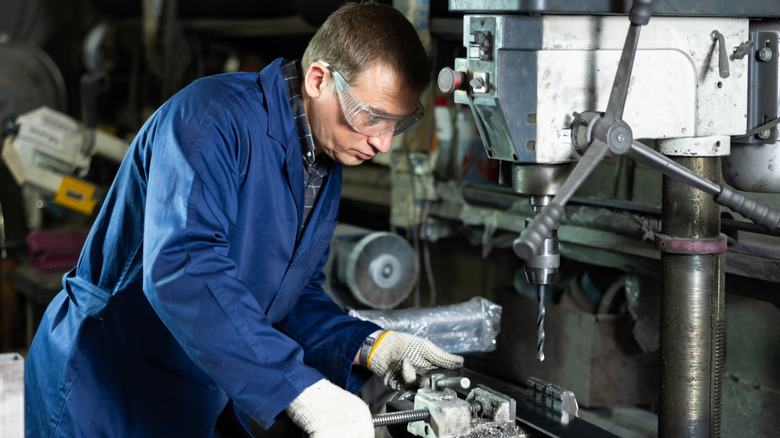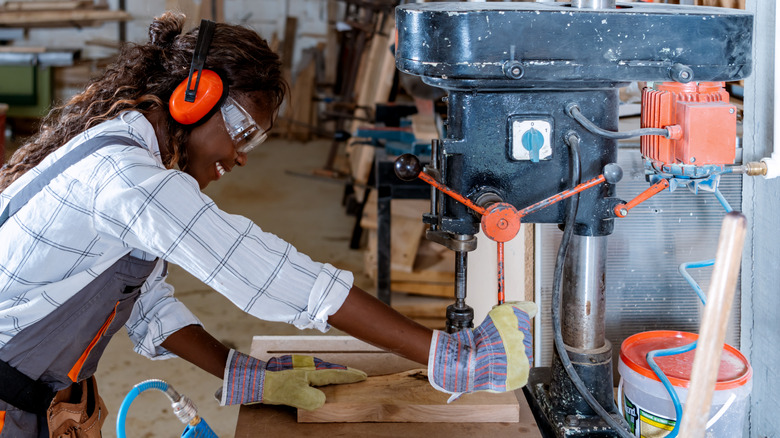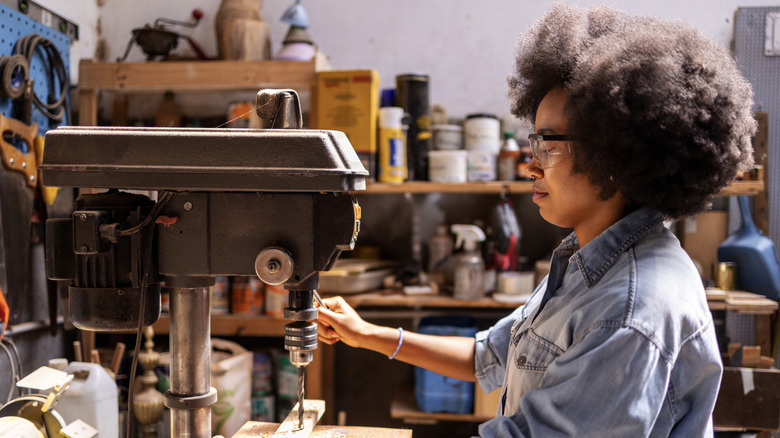How To Choose The Best Drill Press For Your Woodworking Projects
We may receive a commission on purchases made from links.
Woodworking is a thrilling hobby, and surprisingly, one of the oldest professions around. With woodworking tools becoming more affordable (check out this selection of the best woodworking tools you can add to your garage for under $20), it has been difficult for DIYers to resist the allure of repairing or building something for their home with their own hands.
Now, if you're interested in woodworking, choosing the right drill press can help set you on the path of a crafter. After all, a drill press is one of the most versatile tools in any garage. It can help you create precise holes in various materials (say, glass and metal) and also attain consistent mortises in wood. You can even use it to construct railings, drill housing units, or even make jewelry.
However, with drill presses becoming more user-friendly and advanced, finding the best can come with a sense of paralysis. How can you sort through the various brands and models to make the right choice that fits your needs and budget? You don't need to be a professional woodworker or carpenter to make the right decision.
It all starts by figuring out what you need to achieve and how drill presses differ. You should also consider other factors like the materials you'll work with, the size of your projects, and the amount of money you're willing to spend. With that being said, let's explore helpful tips that'll help you choose the best drill press for your next DIY project.
Power and motor size matter more than ever
If you're in the market for a new drill press, you're probably aware that the motor is one of the most critical features of your drill press. It's not just a spec — it's a component that gives your drill press the muscle and rotational speed required to create holes in various materials. Furthermore, it's the powerhouse that drives efficiency and precision in each DIY project.
That said, if you want to be serious about your DIY projects, it's important to be aware of which motors are considered the best. A half-horsepower motor will help handle light-duty tasks (say, drilling through soft materials). The Shop Fox W1669, for instance, comes equipped with this type of motor, delivering enough torque to create clean cuts in lighter materials.
On the other hand, a drill press with a ¾ horsepower or higher motor will help handle the most demanding tasks, like boring through dense hardwoods or metalwork. As of this writing, the JET JDP-15B is considered one of the best on the market. This is because it has a powerful ¾ horsepower motor that delivers enough torque for precise, clean cuts, even in demanding metalwork.
For those looking for a drill press with maximum power, the Powermatic PM 2800B steps it up with a one-horsepower motor. It's specifically designed for drilling through thicker materials and heavy-duty projects. Before you make any purchase, however, it helps to know that motor size will also affect your drill press's ability to work with various drill bit types. So, if you plan to work with hole saws or forstener bits, models with low-powered motors will struggle.
Don't overlook the variable speed control feature
Another spec you should consider when shopping for a new drill press is its speed settings. Speed control is not just for convenience — it's also essential. After all, having precise control over revolutions per minute (RPM) is crucial, especially when drilling through various wood types. The reason is that having precise control over RPM means that you'll achieve clean, accurate cuts and holes. Additionally, you'll protect the drill bit from dulling and overheating (usually when you start drilling at fast RPMs).
With that said, woodworkers looking for cutting-edge performance should be more inclined to buy a drill press with variable speed control. The JET JDB-15B boasts a mechanical variable speed system that allows for impressive and smooth transitions between 530 and 3,100 RPM. This usually makes it easier for people to switch from drilling softwoods like cedar to creating holes in dense hardwoods or metal.
The Klutch Benchtop Drill Press takes things further with its digital RPM readout and a simple-to-use speed dial. This eliminates the need to manually adjust the belt's position (which is often the case with belt-driven pulleys like the Ryobi 10-inch drill press). In addition to that, it also helps prevent overheating and splintering, especially with hole saws.


